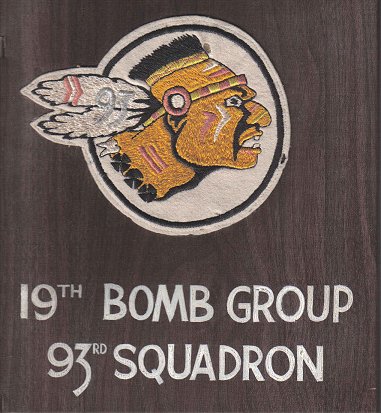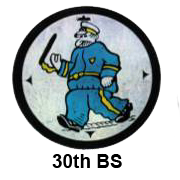At 12:35 p.m. local time, with everyone at Clark Field focused on the short-notice assignment, the air-raid siren warned of Japanese aircraft nearby. Unfortunately for those on the ground, the alarm came too late as enemy planes were already overhead. Some spotted the aircraft formations just before the warning, but few could distinguish whether they were enemy planes until bombs began descending from them. Japanese pilots had somehow eluded detection en route to the Philippines and caught Clark Field entirely unprepared. There was little time for most individuals to seek adequate cover. Those more fortunate found protection in nearby ditches, trees, or man-made trenches. Corporal Grant Adami of the Weather Detachment, 28th Bomb Squadron, dove into the closest trench he could find. He landed on a pile of airmen that had reached the narrow fortification sooner, mere seconds before hearing “the blood-curdling scream of falling bombs.”
Two waves of Japanese bombers shattered hangers, demolished houses, ruined planes, and hollowed out craters across the installation. Following the bombing raids, Japanese fighter pilots made repeated strafing runs across the airfield targeting anything not already razed. They concentrated on the B-17s positioned, to their disbelief, in open formation. From a moderately safe location, Second Lieutenant Austin Stitt watched with dread and astonishment as Japanese fighters flew in “a pattern like knitting, north to south and south to north,” each time unloading machine-gun fire on the helpless base.
 The interlude between each strafing run allowed men on the field brief moments to retaliate. The 200th Coast Artillery and the 192nd Tank Battalion contributed anti-aircraft fire from grounded emplacements, while a few others managed to reach machine guns from inside planes not yet torched. In the skies, one crew from the 93rd arrived from Del Monte for repairs on its plane, unaware of the attack until nearing Clark Field. The men exchanged fire with the enemy in the air before Sergeant Arthur Norgaard, radio operator, lined .50-caliber machine gun bullets in one Japanese plane that sent it diving toward land. When one of their own bombardiers was injured in the skirmish, the outnumbered crew decided to head back to Del Monte and seek medical care. These successful counterattack attempts notwithstanding, the enemy endured considerably far fewer casualties compared to the amount of destruction it wreaked on the American base.
The interlude between each strafing run allowed men on the field brief moments to retaliate. The 200th Coast Artillery and the 192nd Tank Battalion contributed anti-aircraft fire from grounded emplacements, while a few others managed to reach machine guns from inside planes not yet torched. In the skies, one crew from the 93rd arrived from Del Monte for repairs on its plane, unaware of the attack until nearing Clark Field. The men exchanged fire with the enemy in the air before Sergeant Arthur Norgaard, radio operator, lined .50-caliber machine gun bullets in one Japanese plane that sent it diving toward land. When one of their own bombardiers was injured in the skirmish, the outnumbered crew decided to head back to Del Monte and seek medical care. These successful counterattack attempts notwithstanding, the enemy endured considerably far fewer casualties compared to the amount of destruction it wreaked on the American base.
The assault lasted nearly an hour, and the enemy had left Clark Field in tatters. “Everything everywhere seemed on fire or dead,” reflected Stitt,  the 30th Bomb Squadron bombardier. The thick smoke emanating from burning planes and buildings turned the daylight sky dark; the “sun became like the moon,” one survivor recalled. Twelve of the nineteen B-17s at Clark Field were destroyed. Only two that survived the attack needed routine maintenance in order to takeoff again; the rest required extensive repairs. The 24th Pursuit Group, also headquartered at Clark Field, lost several of its P-40 interceptors that never left the ground. Some aircraft were no longer recognizable. First Lieutenant Frank Kurtz, 30th Bomb Squadron pilot, could only distinguish “Old 99” by its unharmed silver tail. Everything else of his ship was “melted and bent and ruined and her back sagging and broken.” As he walked closer, he identified half of his eight-man crew lying on the ground, including his co-pilot, all dead.
the 30th Bomb Squadron bombardier. The thick smoke emanating from burning planes and buildings turned the daylight sky dark; the “sun became like the moon,” one survivor recalled. Twelve of the nineteen B-17s at Clark Field were destroyed. Only two that survived the attack needed routine maintenance in order to takeoff again; the rest required extensive repairs. The 24th Pursuit Group, also headquartered at Clark Field, lost several of its P-40 interceptors that never left the ground. Some aircraft were no longer recognizable. First Lieutenant Frank Kurtz, 30th Bomb Squadron pilot, could only distinguish “Old 99” by its unharmed silver tail. Everything else of his ship was “melted and bent and ruined and her back sagging and broken.” As he walked closer, he identified half of his eight-man crew lying on the ground, including his co-pilot, all dead.
During the attacks, many risked their lives to move the wounded away from the line of fire. Once the enemy had retreated, troops with minor or no injuries took advantage of the momentarily calm skies and rushed the dead and injured to Fort Stotsenburg hospital. The Clark Field flight surgeon estimated that, at one point, fatigued doctors and nurses provided care to 250 men in the building, a figure that did not include injured Filipino civilians who also worked at the airfield.
Thirty-one men from the 19th Bombardment Group – twenty-one ground personnel and ten flight crewmen – died from the events that day. To borrow from Abraham Lincoln’s Gettysburg Address, these American servicemen “gave the last full measure of devotion” to a nation still not officially at war. Some survivors sustained severed limbs or scars from bomb fragmentation that served as a constant reminder of the horrific ordeal.